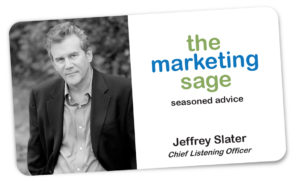Business professionals often confuse demand generation and lead generation.
Demand generation consists of both outbound marketing (email) and inbound marketing (visitors to a website). It is a holistic approach to sales and marketing whose goal is to attract, convert, close, and delight customers.
- It is always-on, so it has the benefit of creating awareness, interest, and demand if you fuel the investment and measure the results.
- It requires clear objectives, metrics, and adjustments and an understanding of customer’s pain points and what they value.
- Multiple elements must work in harmony, or it will fail.
- It is necessary to have a single point of marketing ownership.
- A team approach is required to monitor effectiveness and uses results to guide future activities.
Demand generation and lead generation are two different things
- Demand generation creates interest, focuses on inbound marketing. It drives people to you like on a website, nurtures the full funnel of leads, prospects and existing customers and supports the entire sales and marketing cycle
- Lead Generation is a subset of demand generation. It. turns a lead into a buyer, uses lead magnets (a whitepaper, blog, video) to attract interested parties, and is top-of-funnel focused.
Demand Generation
Demand generation uses the following types of assets/content to drive traffic to the site to build your audiences aware of your brand and services:
- Blog posts or informative articles, resource pages or resource hubs, infographics, videos, social media posts, press releases, interviews, and case studies.
- These assets are free – no signup or capturing of emails, phones, etc.
- Known as inbound marketing – this activity pulls interested prospects toward you
Lead Generation
Lead generation is how you begin to capture relevant data from interested prospects so you can reach out to them by winning name, email, company, and phone data.
- eBooks, whitepapers, research papers, PDF guides, cheat sheets or checklists, product demos and free trials, online courses, viral contests, and email subscriptions.
- These assets may require collecting information from prospects
The differences between these two marketing approaches need to be clear. Understanding this will help as you create a more effective strategic marketing plan.
Confused how to create demand or lead generation plans?
I can help. You can set up a time chat with me about your marketing challenges using my calendar. Our initial conversation is free. You talk, I listen. Email me jeffslater@themarketingsage.com or call me. 919 720 0995. Visit my website at www.themarketingsage.com. Let’s explore working together today.

Photo by Nathan Dumlao on Unsplash




